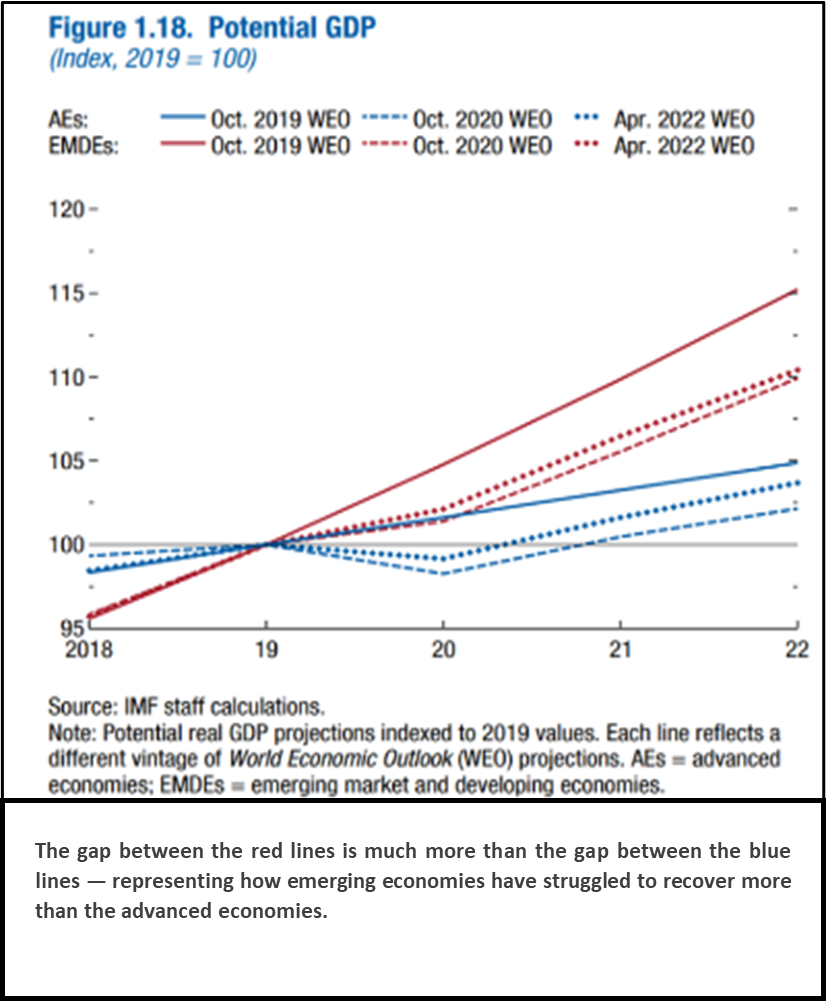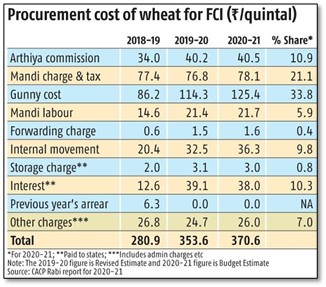Wednesday, 27th April 2022
Trilateral Development Corporation (TDC) Fund
In News
To provide an alternative to the Chinese development partnership model that has pushed parts of the developing world to a debt trap, India has recently launched a platform called the Trilateral Development Corporation (TDC) Fund.
About the News
- China funds dual-use infrastructure projects from the Pacific to the horn of Africa, fuelling “debt-traps” that gives Beijing leverage to gain strategic and military power.
- India has also launched Global Innovation Partnership (GIP) with the UK which will provide a template to use the TDC Fund for trilateral projects with other countries like Japan, Germany, France and the EU who are keen to partner with India in the innovation and development sectors.
- India's contribution to GIP will be channelised through the TDC Fund.
What is TDC fund?
- About: Indian TDC Fund is designed to involve private sectors with state support for investment in the Indo-Pacific region (comprising the tropical waters of the Indian Ocean, the western and central Pacific Ocean, and the seas connecting the two in the general area of Indonesia) and beyond.
- Aim: India aims to use the TDC Fund to contribute to GIP that will globalise Indian start-ups and innovations with help like grants, development capital investment and tech
- Countering China: TDC may provide an alternative to China's development partnership model that has deepened Chinese influence over some of India's neighbours and pushed them into debt traps.
- Need: It comes against the backdrop of the UK offering 5G, nuclear and high-speed rail technologies for China's Belt-Road Initiative (BRI), a global infrastructure development strategy adopted by Chinese leader Xi Jinping as his foreign policy centrepiece.
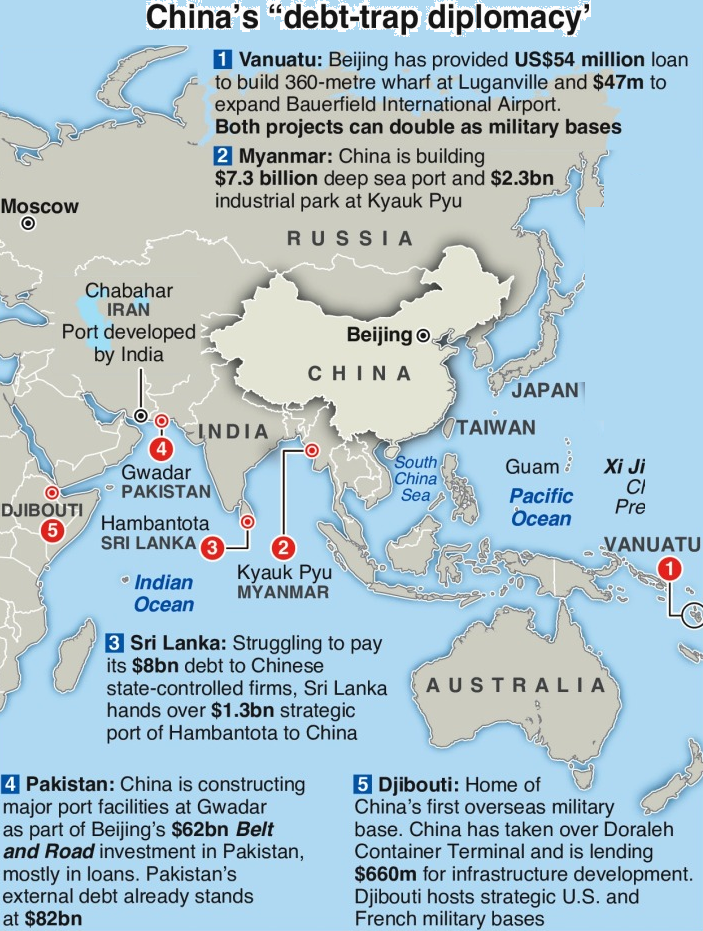
What is Global Innovation Partnership?
- About: It has been signed between India and UK to promote innovation and synergy in emerging fields. It will try to scale up innovations developed by Indian enterprises to select developing countries in Africa, Asia and the Indo-Pacific.
- Overcoming barriers: GIP will help Indian enterprises to overcome these barriers by providing support in the form of grants, technical assistance, hand-holding and development capital investment.
- Dedicated fund: The GIP Fund will be established to deliver the long-term capital investment component of the GIP. The Fund will also leverage additional £100 million from the market to support Indian innovations.
- Boosting innovation: It is expected to facilitate transfer of up to 60 Indian innovations to third world countries that will improve the livelihoods of around 5,000 people and help two million people access critical goods and services.
- New platform: It will create an online 'E-Bazzar' platform to connect multiple stakeholders in the innovation ecosystem and promote collaborations.
- Win-win situation: GIP will adopt a market-driven model and it will be an equal partnership with the UK. Both sides have agreed to co-finance £75million over 14 years to implement various components of GIP.
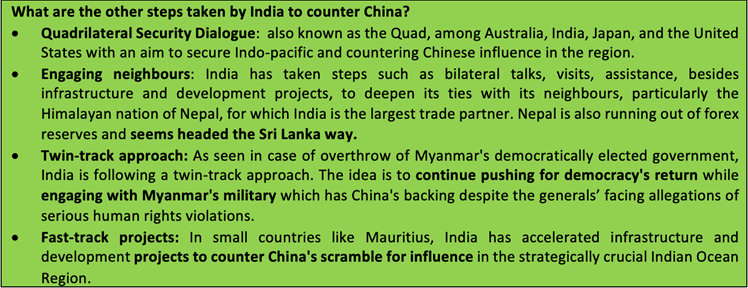
Sources:
CMIE Labour Report
In News:
According to a recent report of the Centre for Monitoring Indian Economy (CMIE), only 40% of Indians of legal working age were employed or were looking for jobs in 2021-22.
Important Findings of the Report
- A growing number of people of legal working age are no longer even looking for work with labour force participation rate (LFPR) at 40% in 2021-22. The LFPR was above 46% in 2016-17.
- Currently, about 1,085 million Indians are aged 15 or above and can be legally employed.
- Labour force participation rate is defined as the section of working population in the age group of 16-64 in the economy currently employed or seeking employment.
- The LFPR among women, who were already a small part of the workforce, has declined further from about 15% in 2016-17 to 9.2% in 2021-22.
- Among men, the participation rate declined from more than 74% to 67%.
- The reduction in the participation rate was higher in the urban areas than in the rural parts of the country.
- The rate slid from 44.7% to 37.5% in urban areas.
- Rural areas saw the figure dropped from 46.9% to 41.4%.
- States-related analysis show that in 23 of the 24 States with data, the participation rate declined in March 2022 compared with March 2016.
- Andhra Pradesh and Tamil Nadu, occupying the top two slots in 2016 witnessed the sharpest declines. Only Rajasthan did not see a decline.
- Government’s Stand: Union Labour and Employment Ministry said it was “factually incorrect” to infer that half the working age population had dropped out of the labour force as a large proportion was pursuing education or engaged in unpaid activities such as caregiving.
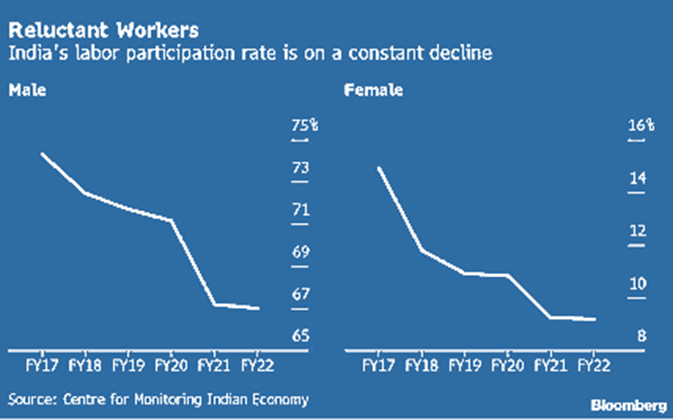
Effects pf Low LFPR on Economy
- Low LFPR suggests that it will be difficult for India to reap the dividend that its young population has to offer with two-third of India’s population between 15 and 64.
- But leveraging this huge demographic is what the future of Indian economy hinges on.
- Economists worry that the country may miss the window to reap a demographic dividend. In other words, Indians may become older, but not richer.
- To keep pace with a youth bulge and increased competition across sectors, India needs to create at least 90 million new non-farm jobs by 2030.
- That would require an annual GDP growth of 8% to 8.5%.
- Though Prime Minister Narendra Modi has prioritized jobs, pressing India to strive for “amrit kaal,” or a golden era of growth, his administration has made limited progress in solving impossible demographic math, according to experts.
Probable Reasons for the low LFPR
- A decline in LFPR predates the pandemic, with events like demonetization and GST rollout as the major shocks to businesses.
- For women, the reasons sometimes relate to safety or time-consuming responsibilities at home. Though they represent 49% of India’s population, women contribute only 18% of its economic output, about half the global average.
- Lack of necessary skill-set is another problem plaguing the labour force. As the world gets technology-driven, many Indians are struggling to keep pace due to lack of training and educational facilities in the country.
Sources:
Elimination of Malaria by 2030
In News
The World Health Organisation has recently said that India has developed a national framework for malaria elimination.
About the News
- What is it? The National Framework for Malaria Elimination (NFME) 2016-2030 outlines India’s strategy for elimination of the disease by 2030.
- Vision: The framework is in line with WHO Global Malaria Technical Strategy and has been developed with a vision to eliminate malaria from the country and contribute to improved health and quality of life and alleviation of poverty.
- Objective: It aims to achieve zero cases by 2027 and to completely eliminate malaria (zero indigenous cases) throughout the entire country by 2030; and
- Maintain malaria–free status in areas where malaria transmission has been interrupted and prevent re-introduction of malaria.
- Status of Malaria: In southeast Asia, India accounts for 80% of the region’s malaria burden. The disease is mainly concentrated in tribal and remote areas of the country.
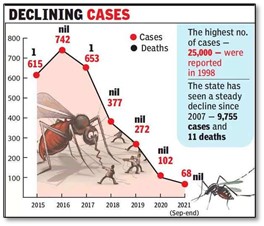
India's efforts towards eliminating malaria
- The National Strategic Plan (NSP) for Malaria Elimination (2017-2022) has been developed based on the National Framework for Malaria Elimination (NFME) of the National Vector Borne Disease Control Programme (NVBDCP) of the Ministry of Health & Family Welfare and World Health Organization (WHO) Global Technical Strategy for Malaria Elimination (2016-2030).
- NSP shifted focus from Malaria control to elimination and provided a roadmap to end malaria in 571 districts out of India’s 678 districts by 2022 and it aims at:
- Indian Council of Medical Research (ICMR) has recently established‘Malaria Elimination Research Alliance-India (MERA-India) which is a conglomeration of partners working on malaria control.
Prevalent Vaccines against Malaria
- Injecting irradiated sporozoites (an early stage of the malaria parasite that infects liver cells) or transferring antibodies from malaria-immune adults can protect others from infection.
- The RTS,S -also known as Mosquirix, is the world’s first WHO-approved vaccine against the type of malaria caused by the Plasmodium falciparum The vaccine is based on a protein expressed on the surface of sporozoite, called circumsporozoite protein (CSP).
- The vaccine is under evaluation in the Malaria Vaccine Implementation Programme (MVIP) in Ghana, Kenya, and Malawi.
- The Vaccine has reduced deadly malaria by about 30%. Based on this, the WHO has recognised Mosquirix as a potentially complementary tool to fight the global malaria burden.
Source:
- India to eliminate malaria by 2030, says WHO rep to India on World Malaria Day. Details here
- World Malaria Day: Malaria-free India by 2030
- India launches the National Framework to Eliminate Malaria
Image source:
Siege of Wagingera
On April 27, 1704, Fort Wagingera was sieged by Aurangzeb after a war between Mughals and Ramoshis. Fort Wagingera is situated on Shorapur hill range. Fort Wagingera was a power centre in the pre-Nizam times. Ramoshi community, is also known as the Berad and Bedar community and is a revolutionary community which later participated in the freedom struggle. Umaji Naik, who belonged to the community, was the first to fight against the British rule and paid with his life for the country. Currently, the community is demanding to be included in the scheduled category list for reservation.
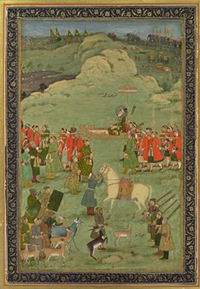
Sources:
India-UK relations
In News
To advance trade and investment relations, India and U.K. have recently launched negotiations for a free trade agreement (FTA).
About the India-UK
- Trade structure: Seven of the UK’s top ten import sectors are the same as India’s leading export sectors.
- Competitive interests: The UK and India have a comparative advantage and competitive interests in sectors like pearls, precious stones, metals, coins; organic chemicals; and pharmaceutical products. Consequently, negotiations of the proposed FTA in the case of these sectors are likely to involve considerable give and take.
- Merchandise export: The India-UK bilateral merchandise trade almost trebled from US$ 5.4 billion in 2000 to US$ 15.7 billion in 2019.
- However, Indian exports to the UK have grown faster than its imports from the UK, turning the trade balance in India’s favour since 2004.
- Civil Nuclear Cooperation: India and UK signed a Civil Nuclear Cooperation Declaration in 2010. It became a milestone for progress of civil nuclear energy generation in India.
- Growth potential: UK remains a bigger player in international services trade than India, while India is the world’s 8th largest exporter and 10th major importer of commercial services.
- Diaspora factor: With the growing presence of the Indian diaspora in the UK ‘personal, cultural and recreational services’ is an area of interest for India as well. This sector offers significant scope for bilateral co-operation.
- Economic and Commercial Relations: India’s main exports to the UK are ready-made garments and textiles, gems and jewellery.
- Main imports from the UK to India are precious and semi-precious stones, metalifers, ores and metal scraps and engineering goods.
- In the services sector, the UK is the largest market in Europe for Indian IT services.
- UK is India’s 3rd largest FDI investor.
- Culture: People of Indian origin is estimated to be around 1.8 - 2 million in the UK. Indians are single largest segment of ethnic
- Majority of the Indians are in white collar professions such as doctors, engineers, solicitors and chartered accountants
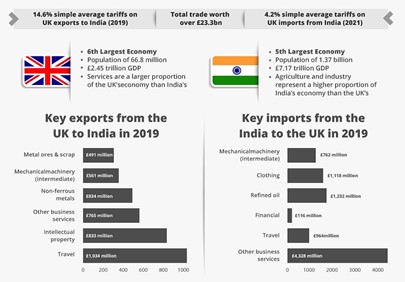
Challenges in the bilateral trade
- Bitter legacy of colonialism: Delhi’s lingering post-colonial resentments and London’s unacceptable claim for a special role in the Subcontinent generated unending friction and made it impossible to pursue a sensible relationship in the past.
- Difference over Ukraine: The current mood on India’s relations with Britain stands on the entrenched pessimism in Delhi and London about visible differences over Ukraine.
- Pakistan factor: British Pakistanis regularly hold lawmakers to account on Pakistani causes. The interests of British Indians are less aligned with India’s. Thus, the immediate prize of British Pakistani votes outweighs the more distant benefits of a stronger partnership with India.
- British hesitations in UN: UK’s statements supporting India’s quest for permanent membership of the UN Security Council (though Britain, like India, supports text-based negotiations on Security Council reforms) doesn’t match by intent as no British (or P-5) UN ambassador has made a statement of support for India on the floor of the UN.
- Poor growth: The share of the UK in India’s external trade has declined significantly because the growth in bilateral trade has been slower than the growth in India’s trade with the rest of the world. The share of the UK in India’s global trade has declined from 5.6 per cent in 2000 to less than two per cent in 2019.
- Tariff and non-tariff barriers: While the UK’s exports face high tariff barriers, India’s exports suffer due to the high prevalence of NTMs in the UK. Besides, Indian exports from some key labour-intensive sectors are disadvantaged vis-à-vis competitor economies like Bangladesh due to the UK’s GSP scheme.
- Structural problems: India’s Economic growth is giving a tough competition to the world’s 5th largest economy and a P-5 member. India had displaced Britain as the 5th-ranked before the pandemic but has now been relegated to 7th
- India a market rather than a partner: India secured the Migration and Mobility Partnership allowing 3,000 young Indians to avail employment opportunities in the UK yearly without labour market tests. But India had to concede the quid pro quo of accepting undocumented Indians from Britain.
Opportunities for India-UK
- Natural partners: India has human capital while UK has advanced R&D, an opportunity for closer bilateral co-operation, as reflected in the tie-up between the UK’s AstraZeneca and the Serum Institute of India for the production of the Covid-19 vaccine.
- Leveraging potential of FTA: The FTA will give both countries good economic and strategic opportunities to stimulate growth. It is expected to add around £14.8 billion to the GDP of India and the U.K. collectively by 2035.
- Services: Services have gained importance in the external trade of both countries over the last two decades. While the share of services in India’s total exports increased from about 29 per cent in 2000 to 40 per cent in 2019, the UK’s share increased from 26 per cent to 46 per cent.
- Advantage India: India is a big investor into the U.K. — especially in dynamic sectors such as fintech, electric vehicles and batteries.
- Source of employment: There are nearly 600 U.K. companies in India employing more than 3,20,000 people.
- Education sector: Around 30,000 students from India are studying in higher education in UK which is the second largest segment of foreign students in UK after China.
- Science & Technology Cooperation: A number of joint research with joint funding are being conducted which include projects in nanoscience, biotechnology, telecom, solar energy use and weather forecasting.
- Tourism: The UK ranks number two in the world in terms of tourists visiting India with around 500,000 Indians visit UK every year.
- Future power: In 2019, India’s share of the world’s GDP was 7.09 per cent and is expected to rise to 7.97 per cent by 2030, making it the world’s third largest economy after the US and China
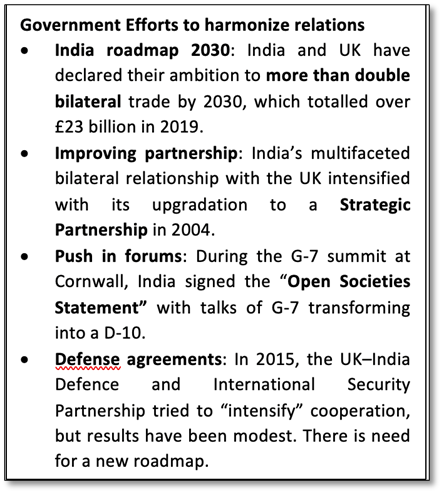
Way Forward
- Pragmatic approach: India needs to recognise the lack of harmony between different strands of the relationship. Arriving at common ground on issues troubling India should be the foremost concern. This relegates Britain’s trade ambitions to secondary importance.
- Targeting British Indians for Indian causes: India can develop more effective approach is to focus on building comprehensive national power and creating British dependencies. One-and-a-half million British Indians, only 1.8 per cent of the population, contribute six per cent of Britain’s GDP. This requires time and patience.
- Return of heritage: India has drawn down expectations of return of heritage owing to legal hurdles. This remains at the core of India’s grievance politics but as India gains confidence, this issue may have a greater salience in the future.
- Recognising geopolitical needs: This relationship has had many beginnings but to concede to changing geopolitical realities especially post- Brexit and India with the China challenge, both needs partners.
- In the changing global dynamics, the moment is ripe to turn the expansive new possibilities — in trade, investment, high technology, defence, and regional cooperation— into concrete outcomes with both working on a roadmap to transform bilateral relations by 2030.
Question: Enumerate the opportunities and challenges faced by India and the UK to develop a mutually-beneficial relationship.
Sources:
Uma Maheshwarar temple
This is image of Uma Maheshwarar temple built by Raja Raja Chola’s grandmother, Sembiyan Madevi in Konerirajapuram, Tamil Nadu, which houses the tallest Nataraja bronze idol. Konerirajapuram has a unique place in the Tamil Bhakti Movement, with its iconography, wall paintings and connection to Carnatic music. There is an inscription and stone carvings depicting Sembiyan Madeviyar, with a garland in her hands, worshipping Lord Siva in the temples. This is the first brick temple that was converted into a stone structure by Sembian Madeviyar in 972 AD. Apart from the Nataraja idol, in the 20th Century, Konerirajapuram dominated the carnatic music world with the advent of Vaidhyanatha Iyer.

Source:
Project SAJAL
- Context: In the backdrop of sharp shortage of drinking water, the government has come up with Project SAJAL in districts of Haryana.
- The aim of the initiative is to provide safe drinking water to school students, which will enable the schools to have a nurturing environment for students to have their studies and activities.
- Under the project, 20 government schools are identified in different districts of rural areas with industrial belts where the ground water is contaminated due to industrial discharge and as suggested by the Central Ground Water Board.
- It was found that the ground water offerings in these districts are mostly saline, and not suitable for drinking purposes. The water had low potable rating as chemical parameters were much higher than permissible limits.
- To address this issue, two technologies have been identified namely- Reverse Osmosis (RO) to lower dissolved solids within permissible limits and Water Cooler to provide drinking water during hot summer months when temperature exceeds 40 degrees Celsius.
- The permissible pH limit of drinking water as per BIS 10500 (2012) standard is 6.5 to 8.5. The permissible limits of Calcium, Magnesium and Chloride are 200, 100 and 1000
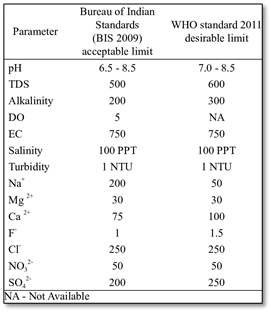
Source:
Image source:
India’s first carbon-neutral panchayat
- Context: Palli in Jammu and Kashmir has become India’s first ‘carbon neutral panchayat’ recently.
- This comes with the 500 KV solar plant been installed in a record time of nearly three weeks.
- Palli is a hamlet in Jammu and Kashmir’s border district of Samba.
- In all 1,500 solar panels have been put up in a total area of 6,408 square metres.
- This will provide clean electricity to 340 houses in the model panchayat under the central government’s ‘Gram Urja Swaraj’
- The electricity generated will be distributed to the village, having a daily requirement of 2,000 units, through the local power grid station.
- Palli village was also an example of the slogan ‘sab ka Prayas’ (Everyone’s efforts). “Every household in Pall offered ‘rotis’ to workers who completed the solar power plant.
- The carbon neutral initiatives of India are in line with its Glasgow pledge of:
- increasing its non-fossil fuel energy capacity to 500 GW by 2030;
- fulfil 50% of its energy requirements from renewable energy sources by 2030;
- reduce its total projected carbon emissions by 1 billion tonnes
- reduce the carbon intensity of its economy by 45% by 2030; and
- achieve the target of net zero emissions by 2070.
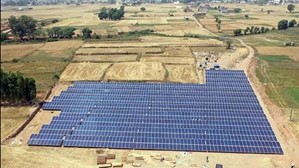
Source:
- Palli in Jammu becomes India’s first carbon-neutral panchayat
- Palli becomes India’s first ‘carbon neutral panchayat’
Image source:
'Step-Ahead' programme
- Context: Food delivery platform Swiggy has recently announced a programme called 'Step-Ahead' programme for its delivery executives.
- The programme aims at “giving an opportunity” to those who want to transition from their current engagement with the firm to full-time, managerial-level jobs with a fixed salary and “additional benefits”.
- Over the next few years, through the programme, Swiggy intends to reserve at least 20% of all its fleet manager hires for its delivery staff. Currently, it has more than 2.7 lakh delivery executives.
- “To be eligible for the role of a Fleet Manager, a Swiggy delivery executive must hold a college degree, possess communication skills and basic computer knowledge, and should have been delivering with Swiggy for a few years.
- However, it did not specify the exact number of years workers would need to have been associated with the firm to be eligible for the programme.
- Reducing the tenure requirement for delivery workers to be eligible for the programme to around 2 years is being considered.
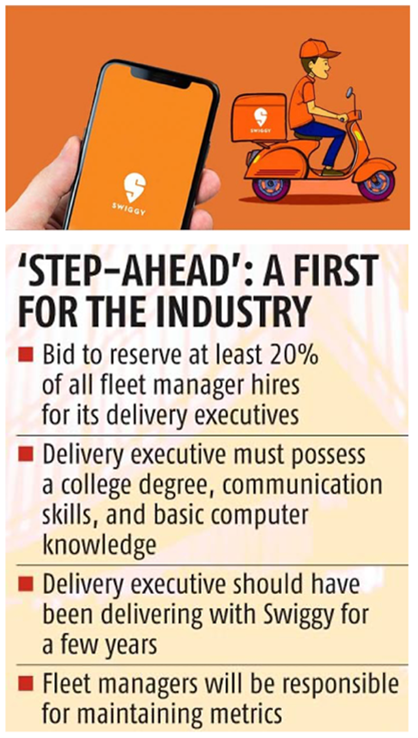
Source:
- Explained: Swiggy’s new programme to help its delivery executives move to managerial roles
- Swiggy starts accelerator plan for delivery execs to assume managerial jobs
Image source:
Hatti community - Edukemy Current Affairs
- Context:The Centre seems to soon fulfill the demand of the Hatti community to be included in the list of Scheduled Tribes (ST).
- The Hatti community is largely concentrated in theTrans-Giri area of the Sirmaur district of Himachal Pradesh.
- Members of the community have settled in and around Shimla as well as theSolan district over time.
- The community, which has over three lakh people, is named after their age-old professional practiceof selling their home grown crops at small markets called ‘Haat’ in nearby cities.
- Till date, the members of this community haven’t been mainstreamed and most are dependent onanimal rearing and agriculture.
- They still follow theKhumbli-the traditional council despite the establishment of the panchayat system.
- It is reported that the Hatti community of the Trans-Giri region of Himachal Pradesh share social as well ascultural similarities with the Jaunsar community of the Jaunsar-Bawar area of Uttarakhand.
- Incidentally, those who crossed over to the Jaunsar Bawar area, which is now in Uttarakhand enjoy tribal status since 1967.
- However, the Hatti community of the Himachal weren’t accorded this status and thus the demand.
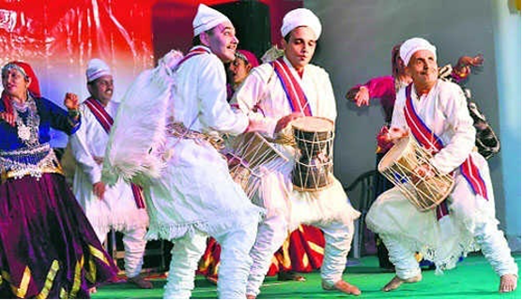
Source:
- Centre to grant ST status to Hatti community soon: Himachal CM
- Decks cleared for inclusion of ‘Hatti’ community in Himachal in list of Scheduled Tribes
Image source:
Another oil, similar woes: The Hindu BusinessLine
Essence: Palm oil has come to account for 63 per cent of India’s edible oil import basket, largely because of external shocks in the form of Russia-Ukraine conflict and South American crop losses. This has created an urgent need for India to reduce its import dependence for its food requirements. India has started to offer technology inputs and subsidies under National Mission on Oilseeds and Oil Palm to increase domestic production. However, quick results are doubtful because of long gestation periods of palm oil plantations to bear fruit.
Author advice government to try to achieve edible oil security by encouraging consumption of traditional, locally produced oils and adhere to predictable policies on imports and tariffs to incentivize domestic producers.
Why should you read this article?
- To understand increasing edible oil import dependency of India.
- To know measures being taken by the government and some additional measures which it should take to reduce import dependence of India.
Source:
Mission antyodaya should not fall by the wayside: The Hindu
Essence: The editorial highlights poor indicators of grassroot empowerment through data led governance despite humungous spending by the center and state government for poverty alleviation. 90% of Indians don’t have salaried jobs and 50% are dependent on causal labor, in rural areas. This article argues that given the right momentum, the ‘Mission Antyodaya’ project of the Government of India launched in 2017-18 (and cast in a convergence framework avowedly to eradicate poverty in its multiple dimensions among rural households) bears great promise to revive the objectives of these great democratic reforms.
Mission antyodaya envisaged improvement in rural poverty status through data led approach and convergence of schemes. There are several gaps that need to be filled are infrastructural gaps, gaps in economic development and social justice, rural-urban disparities, failure to deploy the data to India’s fiscal federalism and so on.
For success of this mission, India needs revamped operational programs to raise socio-economic status of people in villages, improve people participation and governance rather than declaration of massive projects and not leading them to logical conclusion.
Why should you read this article?
- To understand the gaps in program convergence in rural areas.
- To know how Mission Antyodaya could prove to be a game changer.
Source:
PDS has had a spectacular run that may not last: Indian Express
Essence: The editorial talks about the history of PDS supplies, its purpose, management, and feasibility in the present times. It would be the first time in the history of India and a great achievement that a national disaster was handled without hurting the nutrition status of the poor population. Agriculture sector grew at 3% the year India’s economy contracted and it also added to employment of the nation.
The PDS offtake has increased during covid times to approx. 100MMT as compared to the pre-pandemic times of approx. 70MMT- attributed to provisions under PMGKAY. The offtake has drastically increased in the poorest states of Jharkhand, Bihar and UP, currently at 30%, which is more than their share of population in the country. It highlights lagging PDS reforms, discrepancies, lag in supplies, fair price shop reforms, etc.
During covid lockdowns, governments have distributed food kits, a holistic package of food items, going way beyond the mandate. But looking ahead, the procurement of massive amounts of food grains by the government may not happen due to less productivity of wheat, diversification of crop base and high international prices.
Why should you read this article?
- To know about the history and objectives of PDS scheme of India.
- To know the reasons for future contraction of PDS scheme.
Source:
Sewage to Clean Drinking Water
Background:
- When it comes to India’s water condition, two images stand out: the vast amount of sewage water generated every day and the paucity of clean and pure water.
- To solve both the above problems in one go, Absolute Water Private Limited converts sewage water to clean drinking water.
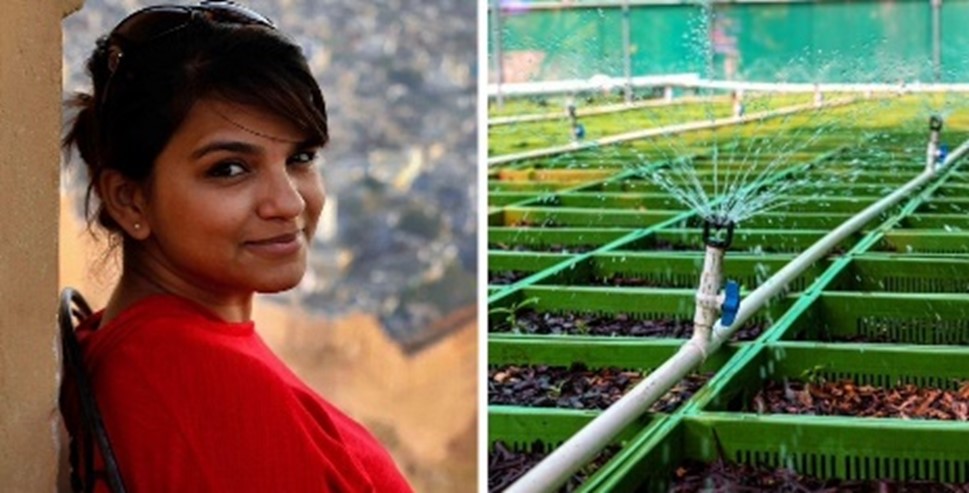
Treating sewage water:
- Absolute Waters manufactures sustainable plants that filter domestic, drain, industrial sewage, spray pond water and kitchen wastewater to produce 1 lakh litres of clean water per day. The treated water can be used for drinking and cooking..
- The solar-powered plant consumes very little electricity and generates no sludge.
- It costs one-fifth of an average sewage treatment plant and is now used in many institutions like hospitals, schools, universities and hotels.
Quote: “There is no excuse-and we should call a spade a spade-for chemical companies and oil refineries using our major rivers as pipelines for toxic waste. There is no excuse for communities to use other people's rivers as a dump for their raw sewage.”-Lyndon B. Johnson
Source:
Share the article
Get Latest Updates on Offers, Event dates, and free Mentorship sessions.

Get in touch with our Expert Academic Counsellors 👋
FAQs
UPSC Daily Current Affairs focuses on learning current events on a daily basis. An aspirant needs to study regular and updated information about current events, news, and relevant topics that are important for UPSC aspirants. It covers national and international affairs, government policies, socio-economic issues, science and technology advancements, and more.
UPSC Daily Current Affairs provides aspirants with a concise and comprehensive overview of the latest happenings and developments across various fields. It helps aspirants stay updated with current affairs and provides them with valuable insights and analysis, which are essential for answering questions in the UPSC examinations. It enhances their knowledge, analytical skills, and ability to connect current affairs with the UPSC syllabus.
UPSC Daily Current Affairs covers a wide range of topics, including politics, economics, science and technology, environment, social issues, governance, international relations, and more. It offers news summaries, in-depth analyses, editorials, opinion pieces, and relevant study materials. It also provides practice questions and quizzes to help aspirants test their understanding of current affairs.
Edukemy's UPSC Daily Current Affairs can be accessed through:
- UPSC Daily Current Affairs can be accessed through Current Affairs tab at the top of the Main Page of Edukemy.
- Edukemy Mobile app: The Daily Current Affairs can also be access through Edukemy Mobile App.
- Social media: Follow Edukemy’s official social media accounts or pages that provide UPSC Daily Current Affairs updates, including Facebook, Twitter, or Telegram channels.

